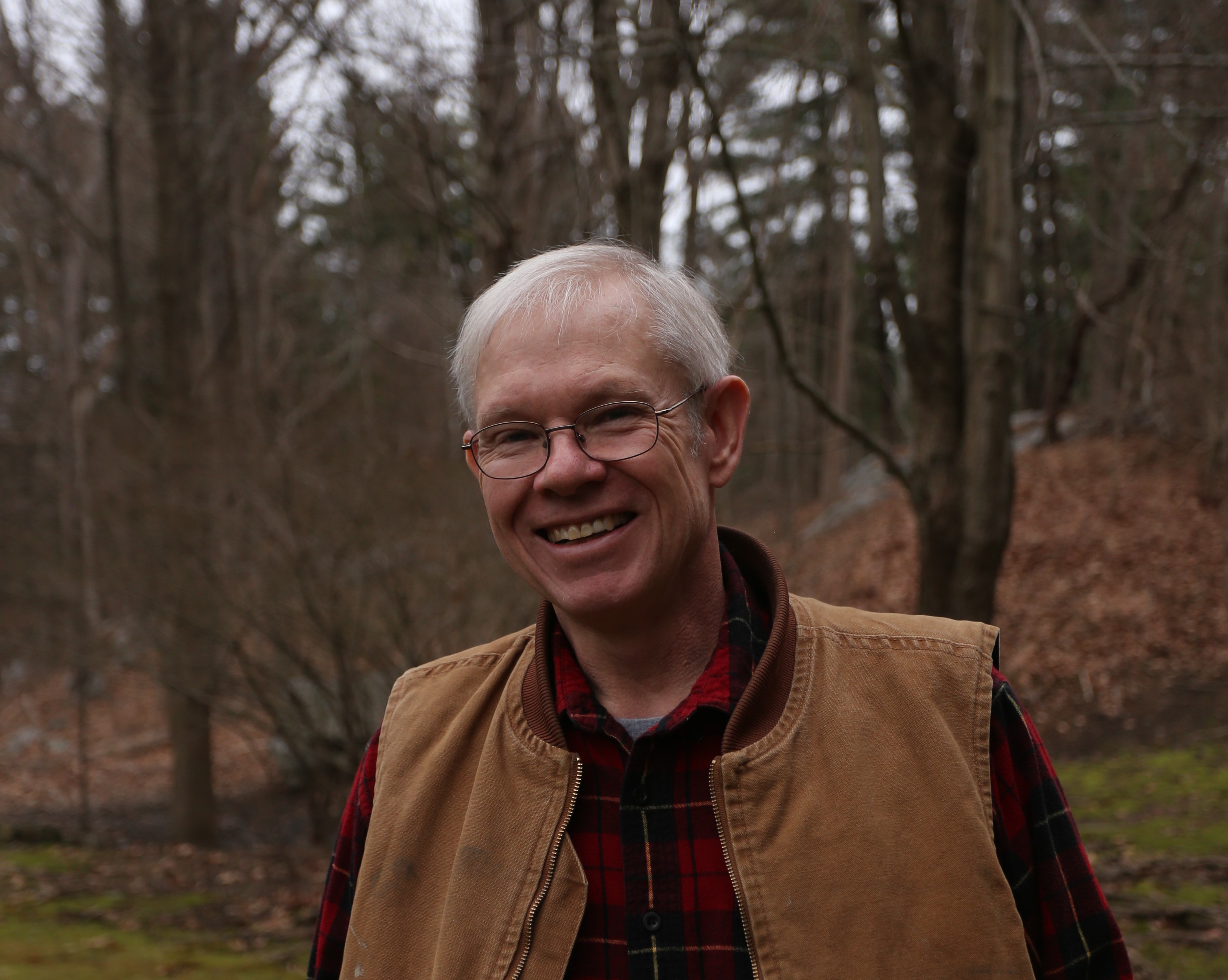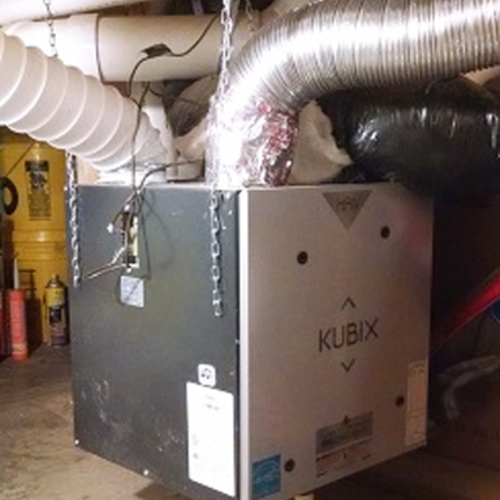
Editor’s note: This is the first post of a new GBA Prime blog “It’s Not that Hard,” by Andy Engel. With a wide range of experience in the building trades and a couple of decades covering home building as an editor at Fine Homebuilding and Professional Deck Builder, as well a presenting at JLC live and writing books for the Taunton Press, Andy has a unique view. He’s practical, smart, and still passionate about building, so we’re excited to see what he will bring to GBA in his bi-weekly posts. By way of an introduction, we’ve made his first post free. Welcome Andy!
My name is Andy, and I like building science. I’ve even been known to practice it sometimes.
(Group responds: “Hi Andy.”)
Some of you may know me from my long association with Fine Homebuilding. I’ve read that magazine since its inception, and I’ve been an editor there intermittently since 1996. Fine Homebuilding was a gateway to my interest in building science. Even before that I was reading my father’s copies of Popular Mechanics. That was during the Nixon administration when we had our first energy crisis and people began using phrases like “superinsulation” and “passive solar.”
I became a carpenter in 1979, and a homebuilder in the early 1990s. In the crush of self-employment and parenthood and building or remodeling whatever house we were living in or needed to be living in soon, I often lost track of building science and green building. I just didn’t have the bandwidth to think about much more than keeping the plates I had spinning from crashing to the ground. Air leakage and the actual function of housewraps and insulation rattled vaguely in my brain, but like most builders of the time, I didn’t really know what to do with those thoughts.
By 1996, I was selling my soul to Mammon by spec building vinyl-sided OSB-boxes with a partner who wasn’t sure 80 hours was a long enough work week. I wrote sales pieces that touted our lavish levels of insulation, which also happened to be the code minimum.
The money wasn’t bad, but I knew I’d lost my way.
A career edit
In a hail Mary, I sent a resume to Fine Homebuilding. They didn’t tell me to bugger off. Instead, Kevin Ireton offered me a job as an assistant editor. Sure, it was for half of what I was making as a builder, but there was insurance and sick days and vacation time and it almost certainly saved my soul. Most importantly, it was Fine Homebuilding.
In short order, I found myself working with William B. Rose, whose book Water in Buildings is a seminal read for anyone interested in building durability. I went to a conference at Penn State and was utterly mesmerized by Joe Lstiburek and John Straube. Getting my courage up, I offered to buy them beer afterwards and then tried to keep up with the conversation using what little I remembered from high school science classes. I took the Builder’s Guide to Cold Climates home and made it my bathroom reading (that is not faint praise). Not long after that, I edited an article that talked about tannin bleed from unprimed cedar deteriorating Tyvek, and learned about the wrath of advertisers.
Since then I’ve done clinics at JLC live where I talked about window flashing and basement finishing. Working in the real world, I’ve actually done window flashing and had the salesman run back for his camera because he’d never seen anyone do it right before. I’ve dense packed cellulose, built rain screens, and installed exterior rigid insulation. I wrote an article on basement finishing (“The Stay Dry, No Mold Finished Basement”) that applied what I’d learned from Dr. Joe and from Bill Rose and which became a classic.
Back into the wild
And now I work as a lead carpenter for a remodeling firm that belongs to NESEA and hosts “BS and Beer” events in Connecticut and I dabble as a freelance writer. The company I work for just replaced some windows in a crap-box house from the 1990s and found no rot, not even below the un-flashed windows. Vinyl siding covered the OSB sheathing, which is said to turn to mold salad at the first sign of moisture. And yet, it hadn’t. Where there was housewrap, and that was mostly on the street side, it was just X-cut and folded into the rough openings at windows. Ah, the magic of Tyvek. If the builder had used vinyl windows instead of wooden ones that did rot, we’d have never gotten the call. What I think saved that house was the lack of an interior vapor retarder. Better lucky than smart, it seems.
If you’re just thinking about durability, it’s not that hard. But when you add in the idea of energy efficiency, that changes dramatically. For example, wrapping your head around the idea of how the dew point temperature within a wall floats depending on several factors and then realizing that it doesn’t matter much as long as you keep most water away from the back of the sheathing. Or the back of the drywall in a cooling climate. Or both in a mixed climate. Also, it depends on the ability of the assembly to dry to the inside. Or the outside. And oh, yeah, we have a membrane for that. Two actually–one for the inside and one for the outside, although the ideal placement would be in the middle somewhere it’s impossible to actually place a membrane.
And none if it is that hard when you’re building a new house from the ground up. Keep the details simple and the air barrier continuous. Use sustainably sourced and durable materials. Flash the openings correctly to keep out bulk water. Build thick walls and ceilings with forgiving insulation and a mechanism so they can dry. Heck, if you put enough PV on the roof, you can even slack on the insulation and still achieve net zero. Use enough wood in the construction, some people say, and the carbon it sequesters can make the whole shebang carbon negative. By that line of thinking, we can build our way out of climate change.
And that that’s why I have chosen to call my blog “It’s Not that hard.”
Except, sometime it is.
For instance, what do you do when the scope of work is just to remodel a bathroom in an old house and you open up the exterior wall and there’s no sheathing, just the back of the clapboards, and it’s really only about 5% of the total wall area of the house anyway and besides, the client’s budget just doesn’t stretch very far in the direction of green building?
I don’t know for sure. Most people don’t know for sure. So we look for ways to do no harm. We think about it and consider the factors in front of us and look for ways to do the best we can.
And that’s what I intend to do with this blog–the best I can. I want to talk about how builders actually do the work; how they square theory with reality. I want to hear from you about that; about the practice and the consequences. I promise that I will get things wrong sometimes. And I have no doubt you’ll call me on it. And over the long run, we’ll get better at understanding and thinking about this thing we call green building.
It’s not that hard, right?
-Andy Engel builds, remodels, writes, and rides his bike in the Litchfield Hills of northwest, CT., and beyond.
Weekly Newsletter
Get building science and energy efficiency advice, plus special offers, in your inbox.















13 Comments
Andy, I am thrilled to see you here! A few years ago, in my desperation over finding mold, ice damming, (can I just say "etc." here and let it be understood that there was much, much more?), I read the basement article to which you refer above and boldly reached out to you. Bless you - instead of turning me away, you kindly led me WITH you wisdom and TO your industry contacts. Thanks, again! I look forward to reading your blog.
Thanks, Jennifer. I remember you getting in touch with me. You weren't alone. That article really resonated with people. How did things work out?
Well, we replaced the roof and added overhangs (there were none), replaced the siding, excavated and insulated around the crawlspace, encapsulated the crawlspace in heavy plastic, had an energy audit by a RESNET HERS rater, added an attic door insulated "box," and are in the process of adding baffles and insulation in the attic, as well as insulating the rim joists and (gulp) replacing the HVAC system that failed a few months ago. So, in closing, I hope we are almost there (wherever "there" is!)
A regular GBA blog by Andy Engel. What great news!
That IS great news. I'm looking forward to it. Heck, we might even be (distantly) related. My family used to spell my name like his, but there was a mistake on a birth certificate, and now we're different.
Hi, Cuz! Other people misspell my last name more often than they spell it right. I once noticed it misspelled on a new driver's license. That meant going back to the DMV with my passport to prove that I knew how to spell my name and they didn't. Oh, happy day!
I've been told that "Engel" and its variations comes from the old Germanic tribe, the Angles. We put the "Anglo" in Anglo-Saxon, the "Eng" in England.
"Engel" is also the German word for "Angel." For some of us, that's pretty ironic.
I see by your profile you're also a Jersey boy. My dad's side of the family is from Warren County, by way of Brooklyn.
Andy has a lot to add to the conversation. I'm thrilled he is joining us and look forward to seeing what he decides to focus on in his blog.
I look forward to reading more.
Sir, U write well, with humorous wit, and certainly know your stuff. Lord, but do I understand, to use your phrase, "selling my soul to Mammon" for way too many years. Thanks be to God we are both now free of that. I look forward to receiving your frequent Blog communications or whatever they are called.
Great opening to the new blog Andy. I eagerly anticipate the post in which you remove the kid gloves and drive the “It’s not that hard” stake into the earth.
Looking forward to it!
As I always say, getting interested in building science is a good way to never sleep well again.
Log in or create an account to post a comment.
Sign up Log in